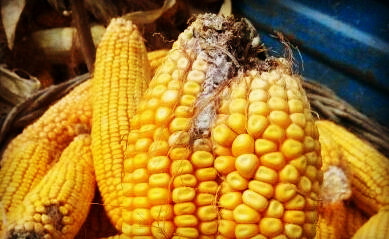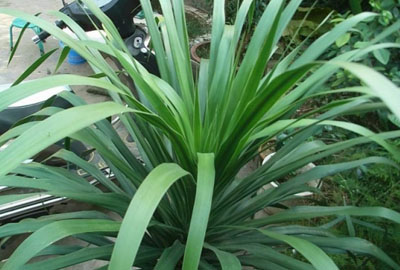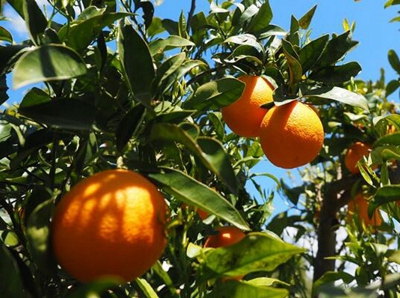Why do the leaves of corn seedlings turn yellow? How to wilt after fertilizing?
Corn tastes sweet and can be used for all kinds of dishes, such as corn flipping, corn juice and so on. It is also the main raw material of industrial alcohol and soju, so a large number of corn seedlings will be planted in the north and south of our country. So why do the leaves of corn seedlings turn yellow? How to wilt after fertilizing?
1. The yellow leaves of corn seedlings are caused by the following reasons:
1. Sowing is too deep. Sowing too shallow is not easy to emerge, too deep will appear weak seedlings, seedling yellow, sowing depth should be controlled at 3mur5cm.
2. It is not timely to interplant and fix seedlings. After the emergence of maize seedlings, the seedlings should be fixed at the time of 4 leaves and 7 leaves, so as to avoid crowding, compete for fertilizer, water and glory with each other, and form weak seedlings, diseased seedlings and yellow seedlings.
3. Insufficient watering. Maize was not watered enough before or after sowing, and the seeds could not get enough water, which affected normal germination and emergence of seedlings, resulting in weak seedlings and yellowing at seedling stage.
4. Water-stained seedlings. The seedling stage of water-soaked maize often coincides with the rainy season, poor drainage in low-lying plots or stagnant water at the rolling place during wheat harvest, resulting in yellow seedlings.
5. Disease. If the seedling stage encounters long-term low temperature, overcast and rainy weather, it will cause the occurrence and epidemic of maize seedling blight. Most of the seedling blight began to occur in the second and third leaf stage, the leaves of the diseased seedlings yellowed and withered, the edges of the diseased seedlings were scorched, and the leaves gradually yellowed and withered from the bottom up; the root hairs were less, and the roots became brown and developed poorly, resulting in weak yellow seedlings.
6. Insect pests. The main pests in maize seedling stage were cotton bollworm, golden needle worm, aphid, armyworm, thrips, Swedish pole fly, ground tiger, sunflower pink scale and so on. The nymphs and female adults concentrated in the base, root and leaf sheath of maize seedlings and absorbed juice, which caused the damaged corn leaf sheath to become yellow and dry at first.
7. Herbicide harm. Improper use of herbicides, random increase in the amount of herbicides, blindly mixed with other pesticides, excessive concentration of herbicides, interuse of sprayers, and the impact of fake and shoddy herbicides on later cropping will cause corn yellow seedlings.
8. Element deficiency. Corn is a zinc-sensitive crop, zinc deficiency will appear white flower seedlings, seemingly yellow corn seedlings.

Second, the wilting of corn seedlings is fumigated by ammonia decomposed by urea.
Because the corn seedlings are still small, the leaves are young and close to the ground, and urea is applied more and more on the soil surface, only a small amount of surface water is irrigated in the high temperature season, granular urea can not be leached to the depths of the soil, a large amount of urea can only be dissolved on the surface. Calcareous soil belongs to alkaline soil, the dissolved urea molecules decompose quickly at high temperature to produce a large amount of ammonia and carbon dioxide, resulting in fumigation seedlings.
In this case, the conditional plots are watered first, and then ploughed and cultivated. It can not only dilute nitrogen fertilizer, but also promote root growth. In the land without conditional irrigation, the measures of cultivating soil after deep ploughing can be taken immediately, which can not only maintain nitrogen and reduce ammonia volatilization, but also remove soil moisture and promote roots. The case suggests that urea is a high concentration of nitrogen fertilizer, which should be properly applied at one time as topdressing. Calcareous soil is slightly alkaline and should be covered with urea and ammonium nitrogen fertilizer as topdressing.
Time: 2019-04-12 Click:
- Prev

What if the leaves of asparagus turn yellow? How to solve it?
Asparagus, also known as dragon blood tree, mountain and kelp, and asparagus iron, is one of the more common potted flowers indoors. It is very dazzling in the sunlight or light, and is favored by flower friends, but if you want to cultivate a good asparagus successfully, you should avoid yellowing leaves.
- Next

The cause of yellowing of orange leaves and its solution
During the Spring Festival, many citizens must have orange trees in their homes, but there will inevitably be some problems in the process of breeding. If the leaves are yellowing, there are many reasons for the yellowing of orange leaves. Such as insect pests, infectious diseases, nutritional imbalance (physiological diseases), etc.
Related
- Fuxing push coffee new agricultural production and marketing class: lack of small-scale processing plants
- Jujube rice field leisure farm deep ploughing Yilan for five years to create a space for organic food and play
- Nongyu Farm-A trial of organic papaya for brave women with advanced technology
- Four points for attention in the prevention and control of diseases and insect pests of edible fungi
- How to add nutrient solution to Edible Fungi
- Is there any good way to control edible fungus mites?
- Open Inoculation Technology of Edible Fungi
- Is there any clever way to use fertilizer for edible fungus in winter?
- What agents are used to kill the pathogens of edible fungi in the mushroom shed?
- Rapid drying of Edible Fungi

